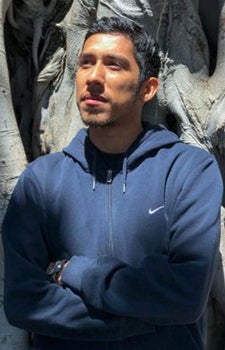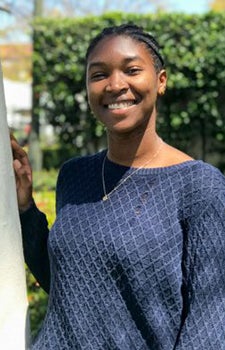
USC Dornsife program creates research pathways for undergrad
Kids dream of jobs in monochrome-like simplicity: “When I grow up, I want to be a doctor, firefighter or pop star.”
Maturity reveals career pathways in full color — a process that USC promotes for underrepresented students under a program to advance science careers. Beyond becoming an astronaut or lawyer or basketball player, USC steers students to work in, say, nanorobotics or microfluidics or geobiology.
“We’re trying to grow scientists,” said Steven Finkel, professor of biological sciences at USC Dornsife.
Finkel leads USC Dornsife’s Geobiology and Genomics Undergraduate Research Experiences (GGURE) program. About 30 students are enrolled this year and more than 160 have participated over the last 14 years.
This is more than a what-color-is-your-parachute job quest for students. The program aspires to change the complexion of higher education while transforming cultural perceptions of college studies.
Funded jointly by USC Dornsife’s Center for Dark Energy Biosphere Investigations (C-DEBI), a National Science Foundation-funded program with focus on the deep ocean, along with the USC Office of the Provost, GGURE accepts undergraduate students, with emphasis on underrepresented and first-generation students. This is a strategic calculation so tomorrow’s scientists become more diverse than today’s.
Broadening access to research in higher education helps change the student body, create access to high-quality research opportunities and build a pipeline of professionals who can one day step into faculty leadership roles.
“This program helps undergraduate students learn that they can have challenging, stimulating experiences in research labs,” said USC Provost Michael Quick. “This is a pathway to a career that they might not have expected.”
Finkel noted that to increase diversity in the ranks of science, it’s important to reach students when they’re young. “We want them to discover there are other potential career pathways in research in addition to more traditionally understood health professions,” he said.
Undergraduate research: access and opportunity
Increasing access and opportunities are top priorities for USC. Recently released student and faculty diversity numbers provide a gauge for measuring the university’s results. USC earns high marks for enrolling more minority students than any other private institution in the Association of American Universities. USC also leads the nation’s universities in enrolling the most underrepresented minority graduate students.
GGURE offers inducements of curiosity and cash. First, students have liberty to seek out many labs to work in. It takes initiative and imagination for a 20-year-old with little or no formal laboratory experience to prove how they will contribute to a research team.
Second, the program pays students for the hours they spend doing research in labs. On average, Finkel said, they make about $17 per hour and work about 13 hours per week or more during summertime — among the highest paid undergrads working at USC.
Mom finds motivation for her son

Xavier Garcia will receive his degree in health and human sciences this month. Photo by Gary Polakovic.
USC Dornsife senior Xavier Garcia received his degree in health and the human sciences this month. He is the first person in his family to go to college. That achievement exceeds his mother’s expectations.
Garcia grew up in Sacramento and wanted to be a doctor, but he was a poor high school student, not for lack of smarts, but lack of initiative. He often skipped school and homework and mixed with the wrong crowd. He assured his mother, a single parent of four children, that everything was okay, and she believed him. It wasn’t. He barely graduated with a D-average.
Next, he went to community college, where he had all but given up on his dream of being a doctor.
“My goal was impossible. How could I compete and go to Harvard or a big medical school when I’m in community college and undervalued?” he said.
His mom told him about a friend, a successful doctor who also attended community college. That story motivated him.
“I thought, ‘If he can do it, then I can do it, too!’” Garcia said. Except the story was a fiction his mom created to motivate her son. It worked. Xavier worked three jobs to pay the bills and support his mother while sending himself to college.
He pulled grades good enough to transfer to USC. When he got here, he realized he lagged in research experience. He needed to spend more time in laboratories while working to pay for school and support the family. He needed a solution. Enter GGURE.
After hearing about the program from other USC students, he applied and was accepted. He joined the Anat Erdreich-Epstein lab at Children’s Hospital Los Angeles, an affiliate of the Keck School of Medicine of USC. Soon, he was using confocal microscopy to see the results of tagging a gene that suppresses brain tumors.
“If it wasn’t for this program, I wouldn’t have been able to do research. I’m still amazed that I get to do things I love. I get paid and I get to help my family at the same time,” he said.
A lab for athletes and artists
Tucked within the physical education building, the Biomechanics Research Laboratory is a fusion of nutrition, physiology, strength and conditioning, data analytics, sports medicine and psychology.
Student Justin Gaither spends three days a week in the lab, working up to six hours per session. After a stint in community college, Gaither transferred to USC and connected with a mentor in the Black Alumni Association, who linked him to the program. Soon, he began working in the lab, which his run by Jill McNitt-Gray, professor of biological sciences at USC Dornsife and biomedical engineering at USC Viterbi School of Engineering.
Gaither works hands-on with patients — including Olympic and NCAA athletes and performing artists — and does research under the supervision of McNitt-Gray. He affixes sensors on patients’ bodies to record motion, linking to a computer model and replicating motions over and over to observe how the body responds. He’s helped USC athletes gain peak performance and people in wheelchairs build locomotion.

Jada Hislop is a first-generation college student who already has research experience as an undergraduate. Photo by Gary Polakovic.
“This is how [our students] get started,” McNitt-Gray said. “We get them involved, progress it and get skills they need to get out and get jobs.”
Gaither said the program has helped him think about his future in new ways.
“It opened my eyes with what I can do in engineering, and I can see how it is applied to different kinds of careers,” he said.
Prompt payoff
Jada Hislop came to USC Dornsife from Georgia, the first person in her family to attend college.
She began in a work-study program in molecular and computational biology and joined the undergraduate program soon after. She works in a lab that studies brain responses to sweeteners, including neuroimaging at USC Dornsife’s Brain and Creativity Institute. She said the program is important because it shows that research experience benefits students immediately, not just after graduation.
“Having those paid research hours each week is very meaningful. If I’m being funded, it means I can be that much more focused on my projects than if I had to work an outside job.”